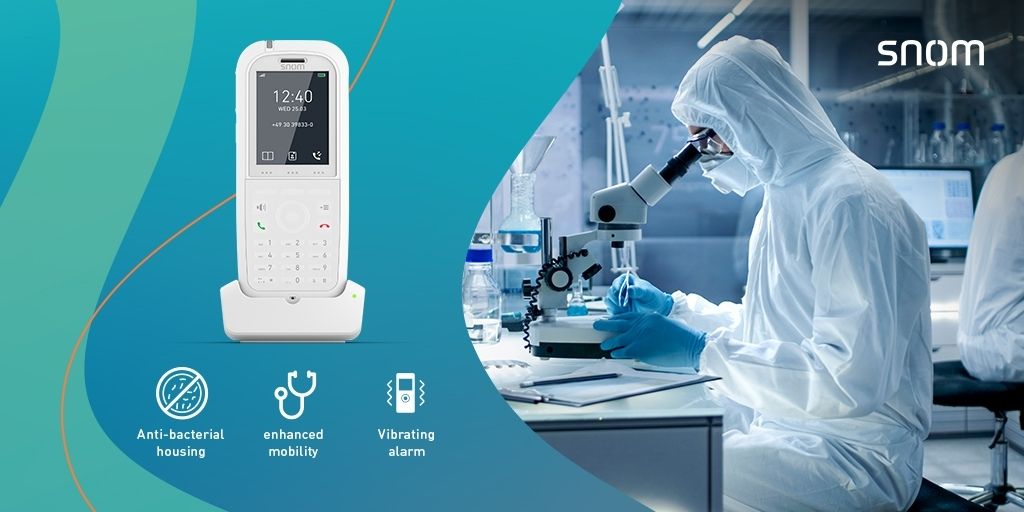
There are certain industries where implementing new communication technologies is not always straightforward. This could be for multiple reasons – for example, a business might have a wide deployment area, a high number of employees to cater for, or specific safety standards that must be upheld.
The latter applies particularly to the healthcare and pharmaceutical industries. While communication is a key aspect for effective patient care, as well as ensuring medicines are produced and handled safely, strict safety protocols must be observed at all times.
Any tools and technologies need to meet these regulations so that they can be deployed. Ultimately, there is no one-size-fits-all solution for healthcare facilities either – each deployment must be based upon the requirements of the department, whether it’s patient-facing or ‘behind the scenes.’
Hygiene is critical
One challenge that companies in the healthcare and pharma sectors share when implementing a new cordless telephony infrastructure is meeting hygiene requirements.
International pharmaceutical manufacturers must adhere to Good Manufacturing Practice (GMP) standards, while individual countries will usually have their own set of health and safety standards.
Healthcare providers may also have classified premises, such as sterile workshops, within their facilities, where they need to avoid contamination. Upholding standards is therefore important for their own safety, as well as that of their patients.
Adapting to a challenging environment
Taking into account those high hygiene standards, any technology implemented has to be carefully selected to ensure it does not become a potential source of contamination. Bacteria and viruses can easily be spread on equipment that is being handled regularly.
Moreover, new devices must be capable of adapting to rapid changes of temperature and humidity levels – particularly in sterile environments where steam-sterilising temperatures will remain at either 121 degrees fahrenheit or 132 degrees fahrenheit to kill microorganisms.
This is why phones with military grade certified robustness and an antibacterial finish that can withstand alcohol-based solutions required for disinfecting clean rooms, are the best option for healthcare providers.
Implementing the right solution
For any business looking to implement new communications equipment, product availability and cost will always play an important part. Using a base station can also make deployments of phones across larger sites such as hospitals more straightforward, as it connects multiple devices through a single point.
Snom’s IP-DECT phones meet a range of requirements and can be deployed throughout healthcare facilities, providing staff with state-of-the-art technology and functionality that makes their day-to-day jobs easier.
Most recently, Snom’s work with a Russian pharmaceutical manufacturer helped to modernise its telecommunications infrastructure, enhancing both internal and external communications within its production facilities.












